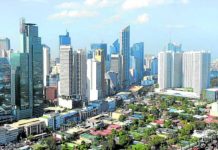
THE Philippines will remain a relatively young nation over the next three decades, but its population is set to age faster than expected as declining fertility — influenced by rising living costs and more women entering the workforce — weighs on family formation.
This points to “emerging chinks” in the country’s population armor, UK-based Pantheon Macroeconomics said in a note to clients, adding that the gains from the so-called demographic dividend “won’t be as big as previously thought.”
Pantheon, citing United Nations projections, said the Philippines’ working-age population was now expected to peak in 2053 — 24 years earlier than a prior estimate of 2077. The shift comes as the fertility rate slips below the replacement level of 2.1 births per woman, dropping to 1.9 in 2022 from 2.7 in 2017, a decline that may have been accelerated by the pandemic.
Miguel Chanco, chief emerging Asia economist at Pantheon, said the drop reflects both “positive long-term changes” and “negative economic reasons.”
The former includes higher female labor-force participation and wider access to contraception and family planning, albeit from a low base. The latter, he said, stem from rising living costs since 2022 and the pandemic’s heavy hit to household balance sheets, which many families are still struggling to recover from.
“What I found the most interesting about the Philippines’ recent demographic trends is the rapid drop in fertility rates over the past 10 years or so, aligning the country more with the rates of its peers,” Chanco said in an interview.
“For a start, a few members of the Asean four — Indonesia, Malaysia, the Philippines and Vietnam — are greying more rapidly than previously expected,” he added.
A declining fertility rate could complicate the Marcos administration’s Philippine Development Plan 2023-2028, which counts on the country’s legion of young workers to help boost growth prospects for the next several decades.
Overpopulation
Despite the trend, Chanco said the Philippines isn’t at risk of aging too quickly. A bigger challenge, he noted, is still overpopulation, which is straining public resources and fueling fierce competition for scarce quality jobs.
That, in turn, is driving an acute “brain drain” of skilled Filipino workers that could undermine human capital, innovation and long-term growth.
“There’s a reason why the country remains a huge exporter of manpower, for instance,” Chanco said. “There simply isn’t enough quality jobs domestically, so brain drain remains a big issue.” (Ian Nicolas P. Cigaral © Philippine Daily Inquirer)







